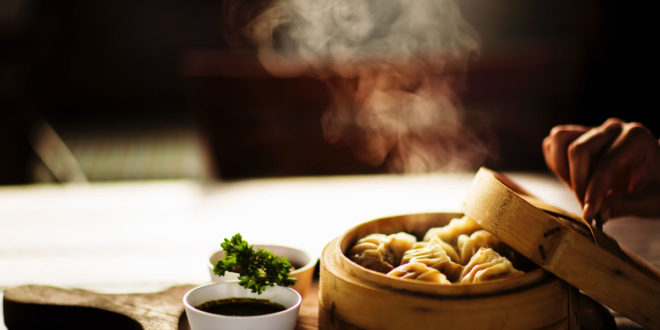Chinese New Year happens on the first day of the first month of the Chinese calendar (between 21 January and 20 February) every year. In Thailand it is another one of the biggest festivals because many Thai ancestors come from China and their traditions still lives on very strongly, deeply embedded in today’s lives and culture of Thai people. For every celebration, food is certainly a very important element. To get you in the mood of Chinese New Year and the special celebration with the food, here is a list of the menus that are believed to bring luck, health, wealth and prosperity to the diners. An auspicious meal welcoming the New Year.
- Fish — an Increase in Prosperity
In Chinese, “fish” sounds like ‘surplus’. Fish is a tradtional Chinese New Year dish. Chinese people always like to have a surplus at the end of the year, because they think if they have managed to save something at the end of the year, then they can make more in the next year.
Steamed fish is one of the most famous Chinese New Year recipes. What fish should be chosen for the New Year dinner is based on auspicious homophonics.
- Chinese Dumplings — Wealth
With a history of more than 1,800 years, dumplings are a classic Chinese food, and a traditional dish eaten on Chinese New Year’s Eve, widely popular in China, especially in North China.
Chinese dumplings can be made to look like Chinese silver ingots (which are not bars, but boat-shaped, oval, and turned up at the two ends). Legend has it that the more dumplings you eat during the New Year celebrations, the more money you can make in the New Year.
- Spring Rolls — Wealth
Spring rolls get their name because they are traditionally eaten during the Spring Festival. It is a dish especially popular in East China: Jiangxi, Jiangsu, Shanghai, Fujian, Guangzhou, Shenzhen, Hong Kong, etc.
Spring rolls are a Cantonese dim sum dish of cylindrical-shaped rolls filled with vegetables, meat, or something sweet. Fillings are wrapped in thin dough wrappers, then fried, when the spring rolls are given their golden-yellow color.
- Glutinous Rice Cake — a Higher Income or Position
Glutinous rice cake is a traditional Chinese New Year recipe. In Chinese, glutinous rice cake sounds like it means “‘getting higher year-on- by year”‘. In Chinese people’s minds, this means the higher you are the more prosperous your business is a general improvement in life. The main ingredients of niangao are sticky rice, sugar, chestnuts, Chinese dates, and lotus leaves.
- Sweet Rice Balls — Family Togetherness
Sweet rice ball is the main food for China’s Lantern Festival, however, in south China, people eat them throughout the Spring Festival. The pronunciation and round shape of tangyuan are associated with reunion and being together. That’s why they are favored by the Chinese during the New Year celebrations.
- Longevity Noodles — Happiness and Longevity
Longevity noodles unsurprisingly symbolize a wish for longevity. Their length and unsevered preparation are also symbolic of the eater’s life.
They are longer than normal noodles and uncut, either fried and served on a plate, or boiled and served in a bowl with their broth.
- Good Fortune Fruit — Fullness and Wealth
Certain fruits are eaten during the Chinese New Year period, such as tangerines and oranges, and pomeloes. They are selected as they are particularly round and “golden” in color, symbolizing fullness and wealth, but more obviously for the lucky sound they bring when spoken.
This article is taken from www.chinahighlights.com.
Photo by Pooja Chaudhary on Unsplash
 The Residence Garden
The Residence Garden
